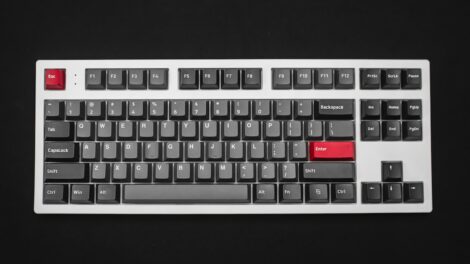On-Page SEO refers to the practice of optimizing individual web pages in order to rank higher and earn more relevant traffic in search engines. It involves optimizing various elements on a webpage, such as content, HTML tags, and images, to make it more search engine friendly. The goal of On-Page SEO is to improve the visibility and relevance of a website in search engine results pages (SERPs).
On-Page SEO is an essential part of website optimization because it helps search engines understand the content and purpose of a webpage. By optimizing various elements on a webpage, you can improve its chances of ranking higher in search engine results. This, in turn, can lead to increased organic traffic and better visibility for your website.
Importance of On-Page SEO for Website Ranking
On-Page SEO plays a crucial role in determining the ranking of a website in search engine results. When search engines crawl and index webpages, they take into account various factors to determine their relevance and quality. On-Page SEO helps search engines understand the content and purpose of a webpage, which can influence its ranking.
One of the main ways that On-Page SEO affects website ranking is through keyword optimization. By conducting thorough keyword research and strategically placing keywords throughout your content, you can signal to search engines what your webpage is about. This can help search engines understand the relevance of your webpage to specific search queries, which can improve its chances of ranking higher.
In addition to keyword optimization, On-Page SEO also involves optimizing other elements on a webpage, such as title tags, meta descriptions, header tags, and internal links. These elements provide additional context and information about your webpage to both users and search engines. By optimizing these elements, you can improve the overall user experience and increase the chances of your webpage ranking higher in search engine results.
Keyword Research and Placement
Keyword research is a critical component of On-Page SEO. It involves identifying the keywords and phrases that are most relevant to your website and target audience. By understanding what keywords your target audience is using to search for information, products, or services related to your website, you can optimize your content to better match their search intent.
To conduct keyword research, start by brainstorming a list of potential keywords and phrases that are relevant to your website. Then, use keyword research tools like Google Keyword Planner, SEMrush, or Moz Keyword Explorer to gather data on search volume, competition, and related keywords. This data can help you identify the most valuable keywords to target.
Once you have identified your target keywords, it’s important to strategically place them throughout your content. This includes incorporating them in the title tag, meta description, headers, and body of your webpage. However, it’s important to avoid keyword stuffing, which is the practice of overusing keywords in an unnatural way. Instead, focus on creating high-quality, informative content that naturally incorporates your target keywords.
Title Tags and Meta Descriptions
Title tags and meta descriptions are HTML elements that provide information about a webpage to both users and search engines. They appear in search engine results pages (SERPs) as the clickable headline and description for a webpage. Optimizing title tags and meta descriptions is crucial for improving click-through rates and attracting more organic traffic.
To optimize title tags, make sure they accurately describe the content of your webpage and include your target keyword. Keep them concise (around 50-60 characters) and compelling to encourage users to click on your webpage in search results. Avoid using generic titles and instead create unique titles that accurately represent the content of each webpage.
Meta descriptions provide a brief summary of the content on a webpage. They should be informative, compelling, and include relevant keywords. Keep them concise (around 150-160 characters) and avoid duplicating meta descriptions across multiple webpages. Including a call-to-action or a unique selling proposition in your meta description can also help attract more clicks.
Header Tags and Content Optimization
Header tags (H1, H2, H3, etc.) are HTML elements that define the headings and subheadings on a webpage. They play an important role in organizing and structuring content, as well as providing context to search engines about the main topics covered on a webpage. Optimizing header tags can improve the readability and user experience of your webpage, as well as its chances of ranking higher in search engine results.
To optimize header tags, start by using the H1 tag for the main heading of your webpage. This should accurately describe the content of your webpage and include your target keyword. Use H2 tags for subheadings that divide your content into sections or topics. These subheadings should also be descriptive and include relevant keywords.
In addition to optimizing header tags, it’s important to optimize the overall content on your webpage. This includes creating high-quality, informative content that is relevant to your target audience. Incorporate your target keywords naturally throughout your content, but avoid keyword stuffing. Focus on providing value to your readers and answering their questions or solving their problems.
Internal Linking and Anchor Text

Internal linking refers to the practice of linking to other pages within your own website. It helps search engines understand the structure and hierarchy of your website, as well as the relationship between different webpages. Internal linking can also help distribute link equity throughout your website, which can improve the ranking potential of individual webpages.
To optimize internal linking, start by creating a logical site structure that makes it easy for users and search engines to navigate your website. Use descriptive anchor text when linking to other pages within your website. This helps search engines understand the context and relevance of the linked page.
When choosing anchor text, use relevant keywords that accurately describe the content of the linked page. Avoid using generic anchor text like “click here” or “read more.” Instead, use descriptive anchor text that provides additional information about the linked page.
Image Optimization and Alt Tags
Image optimization is an important aspect of On-Page SEO. Optimizing images can improve the loading speed of your webpages, enhance the user experience, and provide additional context to search engines. One key element of image optimization is the use of alt tags.
Alt tags are HTML attributes that provide alternative text for an image if it cannot be displayed. They are important for accessibility purposes, as they allow visually impaired users to understand the content of an image. Alt tags also provide additional context to search engines, helping them understand what an image is about.
To optimize images for SEO, start by choosing relevant and descriptive file names for your images. Avoid using generic file names like “image.jpg” and instead use descriptive names that accurately describe the content of the image. This can help search engines understand the relevance of the image to your webpage.
In addition to file names, optimize alt tags by providing descriptive text that accurately describes the content of the image. Include relevant keywords when appropriate, but avoid keyword stuffing. Focus on providing useful information to both users and search engines.
URL Structure and Permalinks
URL structure plays a role in both user experience and search engine optimization. A well-structured URL can make it easier for users to navigate your website and understand the content of a webpage. It can also provide additional context to search engines, helping them understand what a webpage is about.
To optimize URL structure, start by creating descriptive and user-friendly URLs for your webpages. Avoid using generic URLs like “website.com/page1” and instead use descriptive URLs that accurately describe the content of the webpage. Include relevant keywords when appropriate, but keep URLs concise and easy to read.
In addition to URL structure, optimize permalinks, which are the permanent URLs for individual webpages. Permalinks should be descriptive and include relevant keywords. Avoid using generic permalinks like “website.com/?p=123” and instead use descriptive permalinks that accurately represent the content of the webpage.
Mobile Optimization and Responsive Design
Mobile optimization is crucial for website optimization and ranking. With the increasing use of mobile devices to access the internet, search engines prioritize mobile-friendly websites in their search results. Optimizing your website for mobile devices can improve the user experience, increase engagement, and boost your chances of ranking higher in search engine results.
To optimize for mobile devices, start by using responsive design. Responsive design ensures that your website adapts to different screen sizes and resolutions, providing a consistent and user-friendly experience across all devices. This eliminates the need for separate mobile and desktop versions of your website.
In addition to responsive design, optimize your website for fast loading speeds on mobile devices. Mobile users have less patience for slow-loading websites, so it’s important to optimize your website’s performance. This includes minimizing file sizes, compressing images, and reducing the number of HTTP requests.
Monitoring and Updating On-Page SEO Techniques
Monitoring On-Page SEO is important to ensure that your website continues to rank well in search engine results. Search engine algorithms are constantly evolving, so it’s important to stay up-to-date with the latest best practices and make necessary updates to your On-Page SEO techniques.
To monitor On-Page SEO, regularly check your website’s performance in search engine results. Use tools like Google Analytics and Google Search Console to track organic traffic, keyword rankings, and other relevant metrics. This can help you identify areas for improvement and make necessary updates to your On-Page SEO techniques.
When updating On-Page SEO techniques, focus on creating high-quality, informative content that provides value to your target audience. Keep up with the latest trends and best practices in SEO, and make necessary updates to your website’s content, HTML tags, and other elements. Regularly monitor and analyze the impact of these updates to ensure that they are positively affecting your website’s ranking and visibility.
Conclusion:
On-Page SEO techniques are essential for optimizing your website and improving its ranking in search engine results. By conducting thorough keyword research, optimizing title tags and meta descriptions, using header tags and optimizing content, implementing internal linking and anchor text strategies, optimizing images and alt tags, optimizing URL structure and permalinks, optimizing for mobile devices, and regularly monitoring and updating On-Page SEO techniques, you can improve the visibility and relevance of your website in search engine results. This can lead to increased organic traffic, better user experience, and ultimately, more success for your website.
FAQs
What is On-Page SEO?
On-Page SEO refers to the optimization of individual web pages in order to rank higher and earn more relevant traffic in search engines.
What are the benefits of On-Page SEO?
On-Page SEO helps to improve the visibility of a website in search engine results pages (SERPs), increase organic traffic, and improve the user experience of a website.
What are some On-Page SEO techniques?
Some On-Page SEO techniques include optimizing title tags, meta descriptions, header tags, content, images, internal linking, and URL structure.
What is the importance of optimizing title tags and meta descriptions?
Title tags and meta descriptions are important because they provide a brief summary of what a web page is about and help search engines understand the content of the page. Optimizing them can improve click-through rates and increase the chances of a page ranking higher in search results.
What are header tags and why are they important for On-Page SEO?
Header tags (H1, H2, H3, etc.) are used to structure content on a web page and make it easier for users to read. They also help search engines understand the hierarchy and importance of the content on a page.
What is the role of content in On-Page SEO?
Content is a crucial factor in On-Page SEO because it is what search engines use to determine the relevance and quality of a web page. High-quality, informative, and engaging content can help a page rank higher in search results and attract more organic traffic.
What is internal linking and how does it impact On-Page SEO?
Internal linking refers to linking to other pages within a website. It helps to establish a website’s hierarchy and structure, and can also help to distribute link equity throughout the site. This can improve the ranking potential of all pages on the site.
What is URL structure and why is it important for On-Page SEO?
URL structure refers to the way URLs are formatted on a website. A clear and concise URL structure can help search engines understand the content of a page and improve the user experience. It can also make it easier for users to share and link to a page.









Add Comment